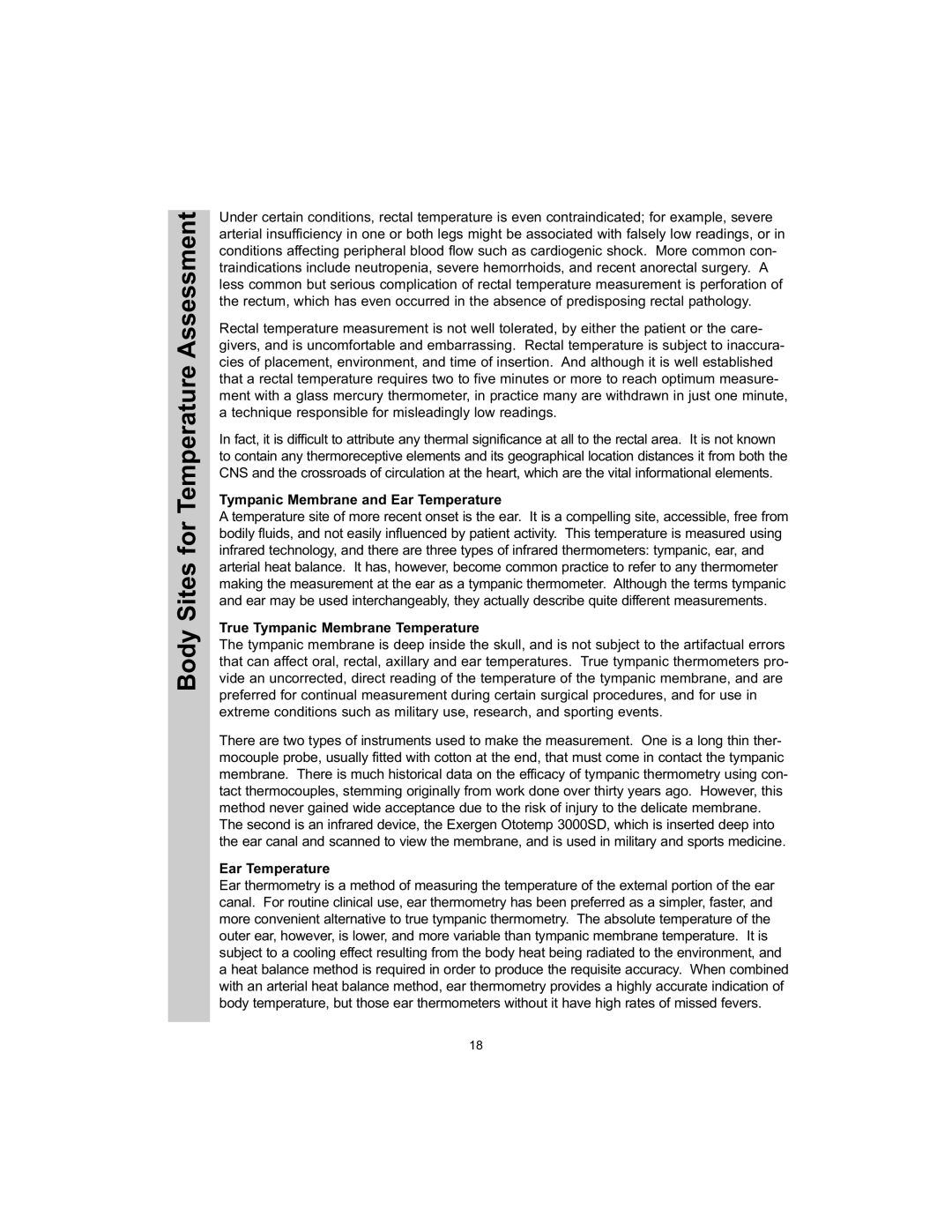
Body Sites for Temperature Assessment
Under certain conditions, rectal temperature is even contraindicated; for example, severe arterial insufficiency in one or both legs might be associated with falsely low readings, or in conditions affecting peripheral blood flow such as cardiogenic shock. More common con- traindications include neutropenia, severe hemorrhoids, and recent anorectal surgery. A less common but serious complication of rectal temperature measurement is perforation of the rectum, which has even occurred in the absence of predisposing rectal pathology.
Rectal temperature measurement is not well tolerated, by either the patient or the care- givers, and is uncomfortable and embarrassing. Rectal temperature is subject to inaccura- cies of placement, environment, and time of insertion. And although it is well established that a rectal temperature requires two to five minutes or more to reach optimum measure- ment with a glass mercury thermometer, in practice many are withdrawn in just one minute, a technique responsible for misleadingly low readings.
In fact, it is difficult to attribute any thermal significance at all to the rectal area. It is not known to contain any thermoreceptive elements and its geographical location distances it from both the CNS and the crossroads of circulation at the heart, which are the vital informational elements.
Tympanic Membrane and Ear Temperature
A temperature site of more recent onset is the ear. It is a compelling site, accessible, free from bodily fluids, and not easily influenced by patient activity. This temperature is measured using infrared technology, and there are three types of infrared thermometers: tympanic, ear, and arterial heat balance. It has, however, become common practice to refer to any thermometer making the measurement at the ear as a tympanic thermometer. Although the terms tympanic and ear may be used interchangeably, they actually describe quite different measurements.
True Tympanic Membrane Temperature
The tympanic membrane is deep inside the skull, and is not subject to the artifactual errors that can affect oral, rectal, axillary and ear temperatures. True tympanic thermometers pro- vide an uncorrected, direct reading of the temperature of the tympanic membrane, and are preferred for continual measurement during certain surgical procedures, and for use in extreme conditions such as military use, research, and sporting events.
There are two types of instruments used to make the measurement. One is a long thin ther- mocouple probe, usually fitted with cotton at the end, that must come in contact the tympanic membrane. There is much historical data on the efficacy of tympanic thermometry using con- tact thermocouples, stemming originally from work done over thirty years ago. However, this method never gained wide acceptance due to the risk of injury to the delicate membrane.
The second is an infrared device, the Exergen Ototemp 3000SD, which is inserted deep into the ear canal and scanned to view the membrane, and is used in military and sports medicine.
Ear Temperature
Ear thermometry is a method of measuring the temperature of the external portion of the ear canal. For routine clinical use, ear thermometry has been preferred as a simpler, faster, and more convenient alternative to true tympanic thermometry. The absolute temperature of the outer ear, however, is lower, and more variable than tympanic membrane temperature. It is subject to a cooling effect resulting from the body heat being radiated to the environment, and a heat balance method is required in order to produce the requisite accuracy. When combined with an arterial heat balance method, ear thermometry provides a highly accurate indication of body temperature, but those ear thermometers without it have high rates of missed fevers.
18
